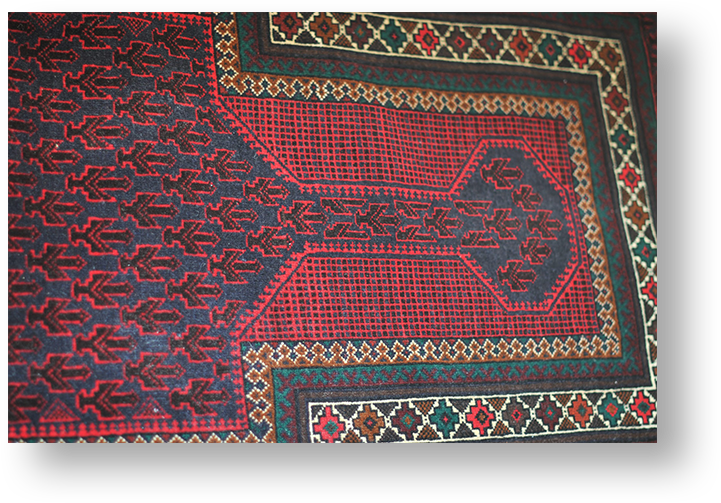34.5553° N, 69.2075° E
Kabuul
Altitude
1,791 m above sea level
Gender
48.7% Men
51.3% Females
Population
4.435 million
These rugs are woven by nomads primarily to decorate and keep their tents warm. One can see these placed on the floors and the walls and often as the door flap, the hatchloo. They eat, sleep, socialize and pray on these rugs.
The women of the nomadic community weave these rugs by hand. These rugs are never made to be sold, only to be traded for daily necessities. The patterns used in these rugs are often thousands of years old, memorized and passed down from mothers to their daughters.
The soviet war introduced the motifs of violence and devastation in the weave.

Step 1
Sheep is reared and sheared using a chako and wool is spun into thread.

Step 2
Herbs are collected to make dyes and the thread is dyed in different colours.

Step 3
The size and design of the rug is determined, and a graph paper is prepared.
Step 4
These carpets are then woven on ground looms. Shana (comb) and changak (finer) is used.

Step 5
Once finished, it is washed and made neat to be sold.

A tribal rug is not just a rug, it is a legacy.


